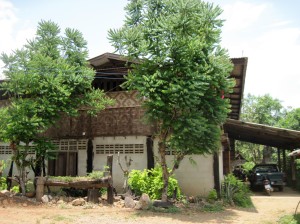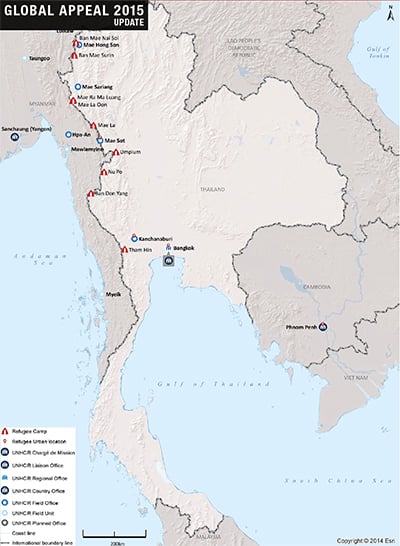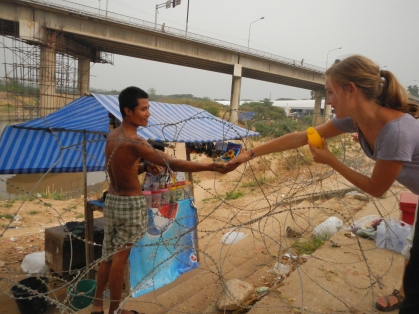It was not how I expected to spend my last English class: clustered into a darkened bedroom with the students, watching Korean Pop TV on mute, and anxiously hoping Thai officials would not discover the five young women hiding with me.
When school staff received a cellphone call, warning of the impending raid, all physical signs of life were removed from sight: our shoes on the front steps were thrown inside; clothing pulled off the line; motorbikes pushed around the side of the building. My class crept anxiously up the stairs, careful not to appear above the open railing.
“Are you ok, Teacha?” someone would ask at intervals. I was fine; if caught by immigration, I’d simply play the role of naive tourist and be on my way.
But my students could not.
Because Thailand never signed the 1951 UN Convention on the Status of Refugees, and thus does not legally accept individuals with refugee status, the more than 140,000 people who’ve crossed over from Burma are not allowed to live in the country. Technically, they do not exist.
Therefore, my school is simply a “village house”; my job is nothing more than “friendly stranger”; and “No, officer, I’ve never met those young Karenni women in my bedroom before.”
We stayed in that room for two hours, stretching our limbs only after another “all clear” call came through the phone.
Travelers should be aware of this situation when they visit the western and northern regions of King Bhumibol’s country. While His Majesty’s government has worked hard to provide assistance to development organizations and cooperate with refugee groups, they remain a population of ghost peoples, trapped between the Burmese border and the sunnier stereotypes of the Land of Smiles.
From Mae Sot, stretching up to the border crossing at Mai Sai, foreigners will encounter numerous check-points manned by Thai soldiers. All natives and citizens must carry state-issued ID cards. Caught on public transport without this, refugees can be fined, jailed or deported. They are not supposed to own vehicles or move beyond the gates of their temporary camps.
Though foreign passports are rarely even glanced at, such stops are a frequent reminder of the limited rights of refugees.
For these reasons, travelers should never expect to visit a refugee camp. Entry and exit is strictly controlled, and even nonprofit workers must apply in advance to visit the areas.
However, the past decades’ influx of immigrants, both temporary and permanent, has influenced the region in more positive ways, creating a unique cultural mix that is visible in towns along the border.
- Mae Sot- A sprawling border city with a maze of markets; thanka-painted cheeks, Aung San Suu Kyi posters and Burmese-English dictionaries indicate a population of Burmese vendors and shoppers. There are also several Burmese style, sweet-tea shops downtown. Here, you can cross the border here into Myawaddy, Burma.
- Mai Saraing- Hoping to be the next “Chiang Mai” but still relatively under-touristed, the town’s Buddhist wats are particularly known for their Burmese-style of design.
- Mae Hong Son- Quiet and often passed by travelers, the surrounding countryside is home to a number of refugee populations; visitors are allowed to stop by several “long-neck” Karen communities, allowed to live outside the camps due to their tourist appeal.
- Mai Sai- Another border crossing point, to Tachilik, Burma. During the day, neighbors cross over to shop in the markets, which sell both Thai and Burmese foods and goods. The night markets on the main street highlight Burmese flavor in some of the curry and noodle soup dishes.

Kelli Mutchler left a small, Midwest American town to prove that Yanks can, and do, chose alternative lifestyles. On the road for five years now, Kelli has tried news reporting and waitressing, bungy jumping and English teaching. Currently working with Burmese women refugees in Thailand, she hopes to pursue a MA in Global Development. Opportunities and scenes for international travel are encouraged on her blog, www.toomutchforwords.com.











